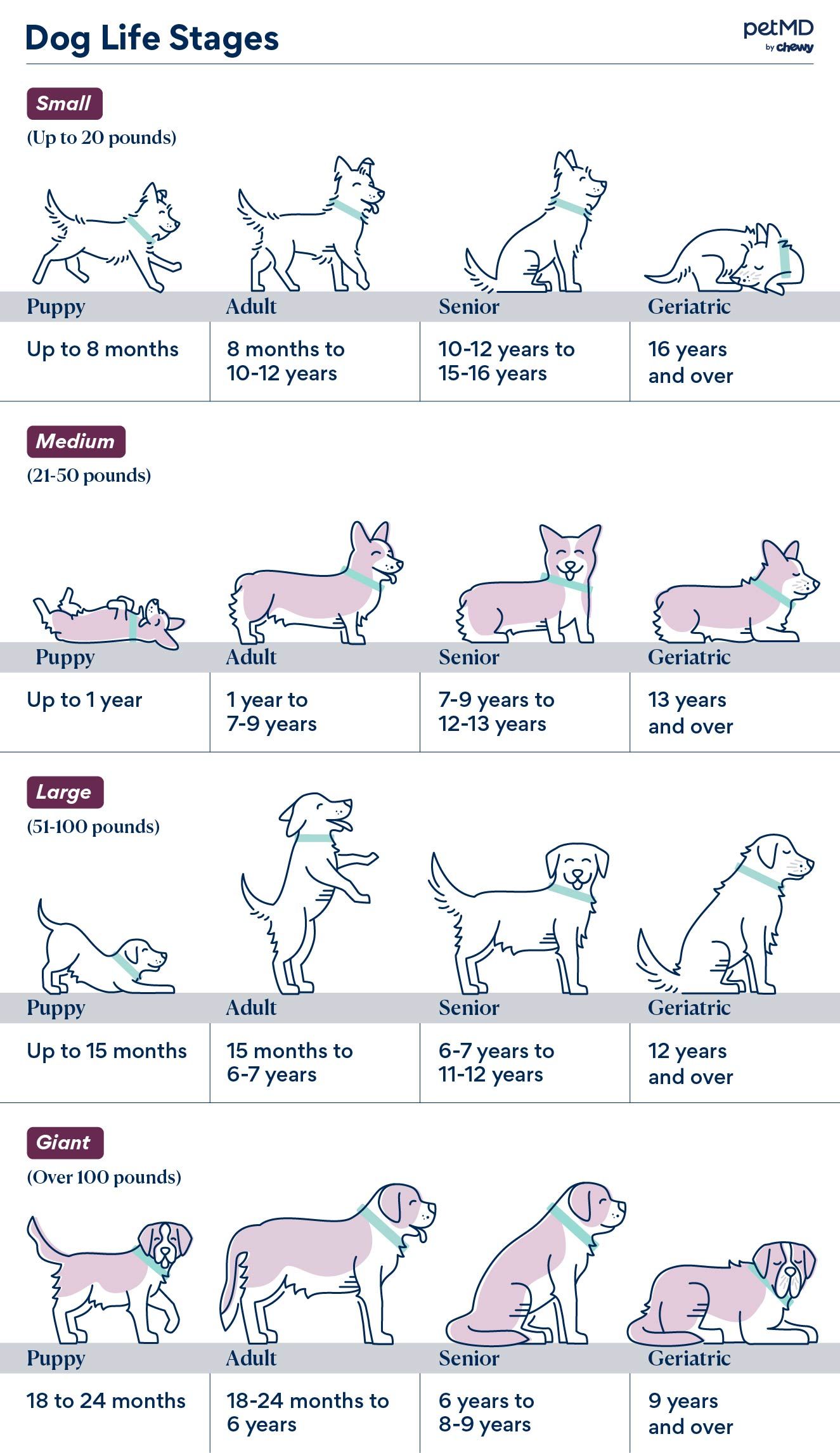Does My Dog Need Senior Dog Food?
Nutrition is a very powerful tool throughout all stages of a dog’s life. It can be used to maintain health, prevent disease, and even primarily manage some disease conditions. That said, just because your dog is getting older doesn’t necessarily mean they need a diet change.
There are many foods out there that are labeled for mature, aging, and senior dogs. There are even diets labeled for all life stages. It can be hard to know what is the best food for your senior dog and whether you should switch to senior dog food.
Do Senior Dogs Need Senior Dog Food?
The decision on what to feed and whether to change to senior dog food should be based on many factors—your veterinarian can help make recommendations based on your dog’s health status, disease risk, and lifestyle.
The goals for feeding a senior dog are twofold:
-
Prevent or manage disease
-
Increase longevity
If your dog has been diagnosed with a condition that’s known to be influenced by nutrition, it may be time for a switch. This is one of the main factors to take into account when deciding if your dog needs a senior food.
What Makes a Senior Dog Food Different?
So, what makes a senior dog food different from adult or all life stages dog food? Food that’s labeled for senior dogs may vary in their ingredient and nutrient profiles, but not always.
For example, the percentage of protein in adult dog food ranges from 18-30%. This is similar to the range of 18-23% for senior dog foods (on a dry matter basis). Other nutrient content can vary widely, as is often the case with sodium and phosphorus levels.
What sets senior dog foods apart from adult or all life stages foods is whether they also have certain nutrients and other ingredients that can help influence or manage certain diseases.
It’s important to read dog food labels, and if you are contemplating a change, check in with your vet to see what your dog’s specific needs may be.
All foods, regardless of stage, should provide the recommended amounts of required nutrients as established by the Association of American Feed Control Officials (or AAFCO). It is important to note, however, that AAFCO approval does not ensure the food will be effective in preventing or managing a specific disease.
What Conditions Can Senior Dog Food Help Manage?
There are quite a few diseases that are known to affect aging dogs. Many of these can be influenced or managed, in part or entirely through nutrition. This includes conditions such as:
-
Dental disease
-
Cognitive dysfunction (dementia)
-
Kidney disease
-
Certain cancers
In some cases, nutritional changes can affect the outcome or slow the progression of a disease process, while in others, it may simply help reduce the signs associated with the condition.
Dogs with dental disease may benefit from senior dry foods with a specific kibble shape, size, and texture to reduce plaque buildup. These may contain added ingredients known to specifically control dental disease.
Alternatively, if your senior dog has lost their teeth, or has few teeth left, your vet may suggest going with a canned food variety for ease and comfort with eating.
Dogs with arthritis may benefit from senior foods with added ingredients that are known to benefit the joints, such as glucosamine hydrochloride; chondroitin sulfate; and long-chain omega-3 fatty acids (eicosatetraenoic acid (ETA), eicosatetraenoic acid (EPA), and docosahexaenoic acid (DHA)), to name a few. If a therapeutic diet is not suggested, supplements containing these ingredients may be recommended for your senior dog.
If your dog has kidney disease, your vet might recommend a high-quality senior food with low (but quality) protein. In many cases, a therapeutic diet may be recommended.
When Does a Dog Need to Switch to Senior Dog Food?
Dog life-stage classifications can help you know when your dog is considered a senior. Depending on their breed and size, most dogs are considered to be “mature adults” between 6 and 8 years old. In most cases, a dog older than 8 years will move into the senior category.

While these age classifications can be helpful in guiding food choices, it’s important to remember that animals are individuals. Just because they reach a certain age does not mean they are necessarily old on a physiologic scale.
The aging process differs for each dog, and just like with people, it may look, feel, and affect them all differently. If your senior dog is healthy and maintaining a good weight, a new dog food may not be needed.
Your veterinarian is your best ally in determining when your dog is ready to transition to a senior diet.
How to Choose the Best Senior Dog Food
Before making the transition to senior dog food, talk with your veterinarian to make sure your dog is ready and that they don’t have any particular suggestions.
Here are some tips for how to make the transition easier for your dog.
Use the Senior Version of Their Current Food
If your canine companion is ready for a senior food, you can start by trying the senior version of what they already eat (same brand, variety, and texture). Many brands offer a senior version of most mature adult foods. This may help avoid digestive upset associated with diet change.
Look for a Senior Dog Food That Is Similar to Their Current Food
If your brand does not offer a senior version, look for senior dog foods with similar ingredient and nutrient profiles. For example, if your dog has always eaten a chicken and rice kibble, look for a senior dry food with similar ingredients.
If your vet has suggested a different formulation, brand, or variety, take a closer look at the ingredients and make your selection based on your dog’s unique needs.
Consider Trying a Food That’s Specialized for Your Dog’s Size or Breed
There are usually small and large breed varieties of senior dog food, depending on the brand.
If you have a small dog, looking for a small breed senior food is a good idea (and the same for larger breeds). These diets are usually formulated with size-specific (or in some cases, breed-specific) needs in mind. This could include a certain kibble shape, size, and texture, or added ingredients for diseases that are more likely to affect dogs of different sizes or breeds.
Listen to Your Veterinarian’s Recommendations for Special Conditions
If your dog has been diagnosed with a condition known to be influenced by nutrition, or they are at risk for certain diseases based on their health and lifestyle, your vet may suggest a therapeutic or prescription diet. These diets require a prescription from your veterinarian.
While these diets do not usually contain the word “senior” in their title, they are formulated to manage disease conditions commonly seen in senior dogs. They may have added ingredients or formulation-specific differences not available in over-the-counter varieties.
Transition Slowly to the New Senior Dog Food
Once you have selected the right diet for your senior dog, it’s important to make the transition gradually to their new food. Ideally, this should be done over 7-10 days or more, with a complete transition to the new food by 14 days.
If your dog is prone to digestive upset, you may want to take longer to introduce the new food. It’s best to start by mixing in small amounts of the new food with their current diet. Each day, you can add more of the new food and remove more of the old food until the transition is complete. If digestive upset occurs (vomiting, diarrhea, or not eating), it’s best to stop the new diet and contact your vet.
Always Talk to Your Vet About Diet Changes
There are so many great options when it comes to senior dog foods these days. The variability in nutrient and ingredient content makes it hard to know what is best. Choosing the right food should be a decision based on your senior dog's specific needs, known health conditions, disease risk, and lifestyle. Your veterinarian is a key player in your dog's health and should be consulted when considering a dietary change.
Featured Image: iStock.com/Atlantagreg
